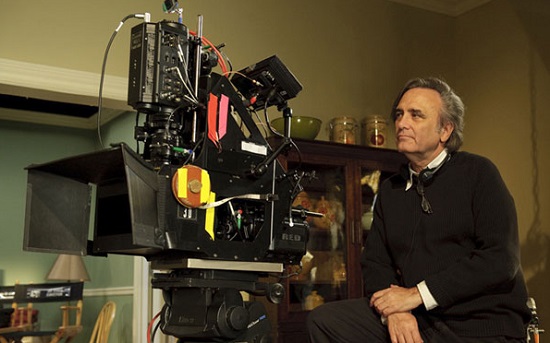Joe Dante’s name will always be synonymous with his 1984 classic Gremlins. However, since spending the late ‘70s in the “Roger Corman film school,” he has been playing around with genre, showing his deep love of B-movies well before Quentin Tarantino came along. He also cut trailers for Corman during that time, and even earlier was one of the minuscule number of American critics who championed the work of Italian horror maestros like Mario Bava.
Gremlins put him on the Hollywood map by becoming a surprise smash hit – despite opening on the same day as a little film called Ghostbusters. He followed that with Explorers and Innerspace, which underperformed at the box-office but found a receptive audience on cable and VHS. This was followed by one of his most-loved movies The ‘Burbs, which by his own admission is the film is he most asked about after Gremlins. Dante, after long declining to make a sequel to Gremlins, finally agreed, but on the condition he could do anything he wanted. The result was Gremlins 2: The New Batch, the first sequel to poke fun at the fact it was a sequel—now a fairly common device.
Matinee was his next film and is undeniably his most personal. It’s about a boy obsessed with monster movies. When Lawrence Woolsey (based on producer William Castle) comes to town to premiere his latest film, Mant!, Woolsey drums up as much publicity as he can for the exclusive screening, and of course their paths meet. It’s all set in Key West, Florida against the backdrop of the Cuban Missile crisis of 1962. Matinee is one of the great love letters to cinema, and Dante’s attention to period detail remains some of the most accurate. One example of this: the film posters in the cinema were not only films that came out that year, but advertised movies that showed in the very cinema Dante’s crew shot in. Arrow Video has just released Matinee in a lavish Blu-Ray edition.
Throughout the years Dante has worked in the world of television. He was one of the directors and also the creative consultant for the cult classic series Eerie Indiana. One of his very best and little known-works is The Second Civil War, which in this US presidential election year seems increasingly prophetic. He directed the most chilling episodes of the Masters of Horror series, and has also helmed episodes of CSI: NY, Hawaii Five-0 and, most recently, an episode in the first season of the DC’s Legends of Tomorrow.
He has directed a few more Hollywood films, including the anti-military children’s picture Small Soldiers, but his experience of working on Looney Tunes: Back in Action made him swear off doing bigger Hollywood projects. There have been two more independent features: the excellent ‘80s throwback The Hole, which was a hit in Europe but barely got released in the US, and the Zombie romcom Burying the Ex, which starred the recently departed Anton Yelchin, and is a lot better and wittier than the title and reviews suggested.
For nearly ten years now, Dante has hosted the insightful webseries Trailers From Hell. Dante has been a avid collector of film trailers all his life, and decided to record commentaries for his favourites. Over the years the series has grown. Dante’s friends and other cineasts have gotten involved, including John Landis, Guillermo del Toro, Larry Karaszewski , Edgar Wright, Josh Olson, and the screenwriter for some of Dante’s early films and a indie auteur in his own right, John Sayles, to name just a few.
Joe Dante sat down to share his thirteen favourite films with us for this Baker’s Dozen:
Matinee is out now on Blu-Ray from Arrow. Click through the pictures to scroll through Joe Dante’s choices.


